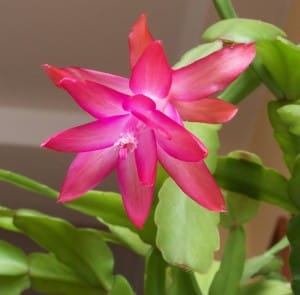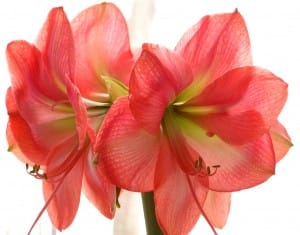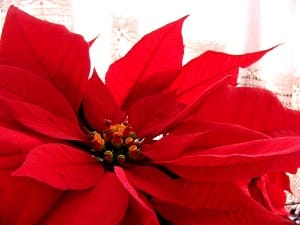Source(s): Willie O Chance
The Christmas season is over and gone for another year. Unfortunately, so are the flowers on your poinsettias. Does this means it’s time to toss them and your other holiday plants out? Why not keep them and grow them to rebloom later this year?
Amaryllis
After your amaryllis has bloomed, the first step is to cut off the old flower stalk or stalks. Place the plant in a bright location and continue to water to encourage foliage growth. Continue this process throughout the spring and summer until fall. In late August or early September, reduce watering and allow the bulb to rest for two months in a cool (not freezing) location. If the soil has become crusty or hard, you may want to repot the bulb in fresh potting soil so that 1/3 of the bulb is above the soil surface and about an inch of soil is between the bulb and the sides of the pot. About mid to late October, put the plant in a well-lit location. Water sparingly until the flower stalk emerges, then water daily. Reflowering should occur about eight weeks later, just in time for the holidays.
Azaleas
After your azalea has ceased flowering, place the plant in a sunny east or west window, where it will receive lots of indirect but bright light. The ideal temperature range is 60o to 70o Fahrenheit as azaleas will suffer in dry air above 70o F. Keep azaleas evenly moist and mist occasionally, if possible. Remove spent or wilted blooms to encourage future flowering. Heavy leaf drop and/or yellowing of the foliage means that the plant is likely getting too much water or not enough light. Try a new location and check the soil to be sure it is not overly wet. Fertilize in the spring and summer with a product designed for acid-loving plants; read and carefully follow directions for indoor, container plants.
Christmas Cactus
After the holidays, place your Christmas cactus in a cool, well-lit location. Water sparingly or when the soil surface becomes dry to the touch. Keep temperatures not over 70o F. during the day and 50o to 55o F. at night, if possible. Continue this process throughout spring and summer, feeding with a houseplant fertilizer according to the label directions. Short, cool days are needed to reflower Christmas cactus plants in time for the holidays. Therefore, provide these plants with 60o F. temperatures and 14 hours of continuous, uninterrupted darkness every night followed by 10 hours of bright light during the day beginning in October and lasting through November. Then relocate Christmas cactus plants to a bright area where they will continue to develop flower buds and bloom.
Poinsettias
Poinsettias are a challenge to grow inside and rebloom, but reflowering can be accomplished with care and patience. After most of the leaves have dropped, cut the stems back to reshape the plant and encourage new growth. You may also need to repot the plant if the soil has become crusty and hard. Place the poinsettia in a bright location and continue to water and fertilize. To initiate the colorful “flowers”(bracts), provide poinsettias with 14 hours of continuous, uninterrupted darkness at nights followed by 10 hours of bright light each day beginning in mid October. Once the bracts have begun to develop, return the plant to normal indoor growing conditions of bright light and barely moist soil. Continue to grow and enjoy your colorful poinsettia plant.
Center Publication Number: 241


